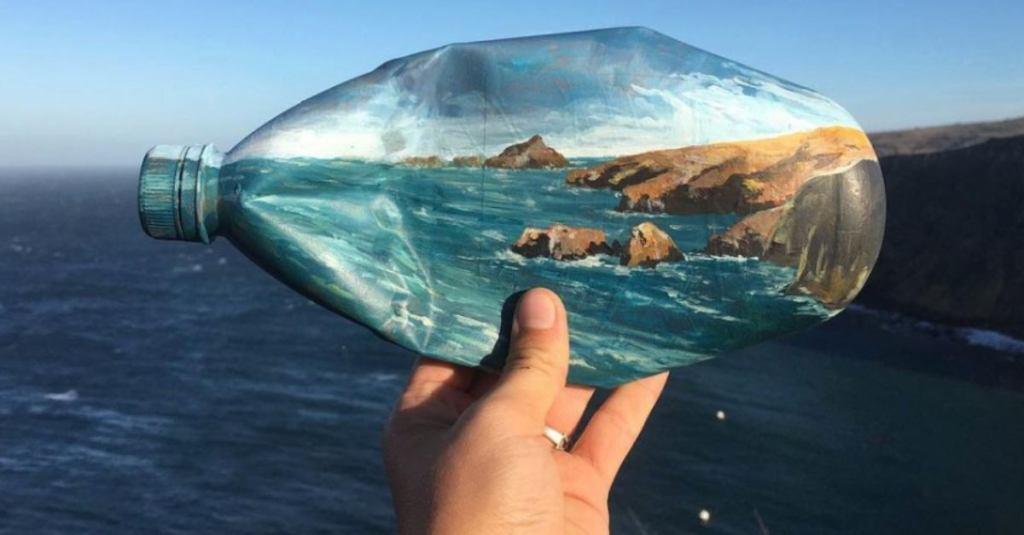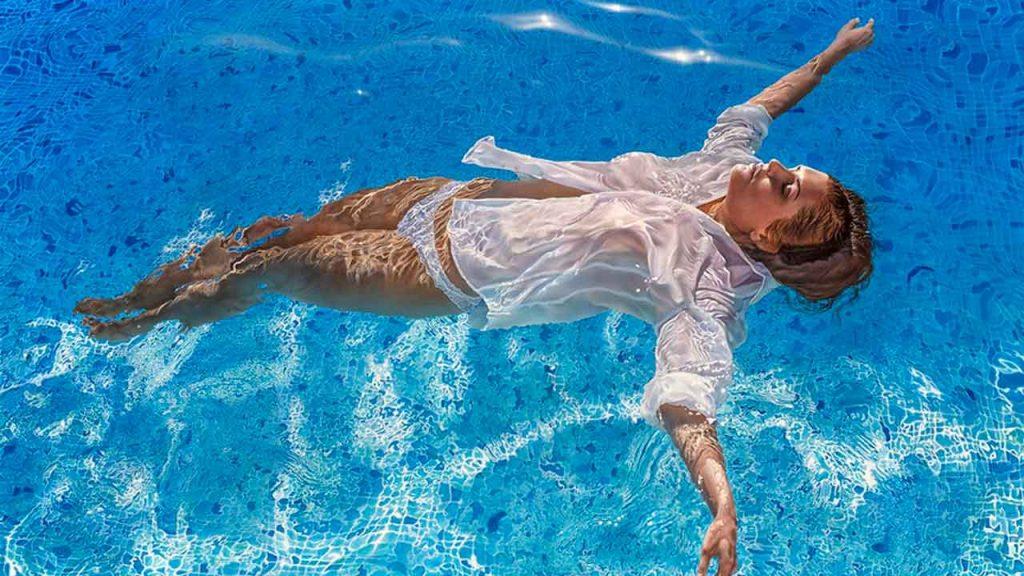Top Art Trends In The USA For 2025: A Glimpse Into The Future Of Creativity
1. The Rise of Immersive Digital Art and the Metaverse Canvas:
Forget passively observing art on a wall. In 2025, the experience will be paramount. Immersive digital installations are already making waves, but their influence will explode in the coming years. Expect to see more artists utilizing technologies like virtual reality (VR), augmented reality (AR), and projection mapping to create interactive and deeply engaging environments.
House of Digital Art – An Immersive Experience in Mauritius
Beyond the Screen: Artists are moving beyond simple projections, crafting complex narratives that unfold within virtual spaces. Viewers will not just see the art; they will participate in it, influencing the story's progression and interacting with digital elements.
The Metaverse Connection: The rise of the metaverse is directly impacting art. Artists are creating digital artworks specifically designed for virtual environments, utilizing NFTs (Non-Fungible Tokens) to establish ownership and authenticity in the digital realm. Galleries are even opening virtual branches, offering a global audience access to digital art experiences.
Examples: Think interactive light sculptures that respond to movement, VR experiences that transport viewers to fantastical landscapes created by algorithms, and AR overlays that transform everyday spaces into canvases for digital art.
2. AI as a Creative Partner: Algorithmic Art and Beyond:
Artificial intelligence (AI) is no longer just a tool; it's becoming a creative collaborator. Artists are experimenting with AI algorithms to generate novel forms of art, raising questions about authorship, creativity, and the very definition of art itself.
Generative Art: AI algorithms are being used to generate abstract paintings, intricate patterns, and even musical compositions. Artists are acting as curators, guiding the AI's output and selecting the most compelling results.
AI-Powered Sculptures: Imagine sculptures that evolve over time, adapting their form based on environmental data or user interaction. AI could analyze data from sensors and use robotic arms to subtly reshape a sculpture, creating a dynamic and ever-changing artwork.
Ethical Considerations: The integration of AI into art raises critical ethical questions. Issues of copyright, ownership, and the potential for bias in algorithms are being actively debated within the art community.
Examples: AI-generated portraits that evolve based on the viewer's emotional state, sculptures that respond to air quality data, and virtual environments designed entirely by AI algorithms.
3. Eco-Art and Sustainable Practices: Art with a Conscience:
With increasing awareness of climate change and environmental degradation, artists are embracing sustainability and using their work to raise awareness. Eco-art is becoming a powerful force, promoting environmental consciousness and advocating for change.

Upcycled and Recycled Materials: Artists are finding creative ways to transform waste materials into stunning works of art. Plastic, discarded electronics, and industrial byproducts are being repurposed into sculptures, installations, and even functional objects.
Living Art: Incorporating living organisms into art, such as moss walls, vertical gardens, and bioreactors, is gaining popularity. These living artworks not only beautify spaces but also contribute to air purification and environmental awareness.
Ephemeral Art: Creating temporary installations that interact with the environment, such as land art that uses natural materials or ice sculptures that melt back into the landscape, emphasizes the impermanence of nature and the need for preservation.
Examples: Sculptures made entirely from recycled plastic bottles collected from the ocean, installations that purify air using algae, and land art projects that restore degraded ecosystems.
4. Socially Engaged Art and Activism: Art as a Catalyst for Change:
Art has always been a powerful tool for social commentary, and in 2025, we'll see an even stronger emphasis on socially engaged art that addresses pressing issues like social justice, inequality, and political polarization.
Community-Based Projects: Artists are collaborating directly with communities to create art that reflects their experiences and addresses their needs. These projects often involve participatory workshops, public murals, and performances that engage local residents.
Activist Art: Art is being used as a direct form of protest and activism, raising awareness about social injustices and advocating for change. This can include performance art, street art, and digital campaigns that challenge existing power structures.
Interactive Installations: Artworks that encourage dialogue and critical thinking about social issues are becoming increasingly common. These installations may involve interactive polls, virtual reality experiences that simulate different perspectives, or collaborative storytelling projects.
Examples: Murals that depict scenes of social injustice, performance art that challenges gender stereotypes, and interactive installations that explore issues of racial inequality.
5. Hyperrealism and the Blurring of Reality:
While digital art and abstraction are gaining prominence, hyperrealism continues to captivate audiences with its meticulous detail and uncanny ability to mimic reality. However, in 2025, hyperrealism will take on new dimensions, exploring the nature of perception and the blurring of lines between the real and the simulated.
Johannes Wessmark,“Wet Hair”
Digital Hyperrealism: Artists are using digital tools to create hyperrealistic images and sculptures that are virtually indistinguishable from photographs or real objects. This raises questions about the authenticity of representation and the role of technology in shaping our perception of reality.
Hyperrealistic Installations: Entire environments are being created that mimic real-world settings with incredible detail, blurring the lines between art and reality. These installations challenge viewers to question their assumptions about what is real and what is artificial.

Johannes Wessmark,“Submerged”
Social Commentary: Hyperrealism is being used to comment on consumerism, social media, and the artificiality of modern life. By meticulously recreating everyday objects and scenes, artists draw attention to the details we often overlook and invite us to reconsider our relationship with the world around us.
Examples: Photorealistic paintings that depict scenes from social media, sculptures that mimic everyday objects with uncanny detail, and installations that recreate familiar environments with a heightened sense of realism.
The American art scene in 2025 promises to be a vibrant and dynamic landscape, shaped by technological innovation, social consciousness, and a renewed appreciation for the power of creativity. From immersive digital installations and AI-driven art to eco-friendly sculptures and socially engaged projects, these trends reflect a desire to push boundaries, challenge assumptions, and create art that is both aesthetically compelling and deeply meaningful. As we look to the future, it's clear that art will continue to play a crucial role in shaping our understanding of the world and inspiring positive change. The convergence of art and technology, coupled with a heightened awareness of social and environmental issues, will undoubtedly lead to even more groundbreaking and thought-provoking art in the years to come. The canvas is ever-evolving, and the artists of 2025 are ready to paint a bold and transformative vision of the future.

Legal Disclaimer:
MENAFN provides the
information “as is” without warranty of any kind. We do not accept
any responsibility or liability for the accuracy, content, images,
videos, licenses, completeness, legality, or reliability of the information
contained in this article. If you have any complaints or copyright
issues related to this article, kindly contact the provider above.
Most popular stories
Market Research

- Latin America Mobile Payment Market To Hit USD 1,688.0 Billion By 2033
- BTCC Announces Participation In Token2049 Singapore 2025, Showcasing NBA Collaboration With Jaren Jackson Jr.
- PLPC-DBTM: Non-Cellular Oncology Immunotherapy With STIPNAM Traceability, Entering A Global Acquisition Window.
- Bitget Launches PTBUSDT For Futures Trading And Bot Integration
- Ecosync & Carboncore Launch Full Stages Refi Infrastructure Linking Carbon Credits With Web3
- Bitmex And Tradingview Announce Trading Campaign, Offering 100,000 USDT In Rewards And More





















Comments
No comment